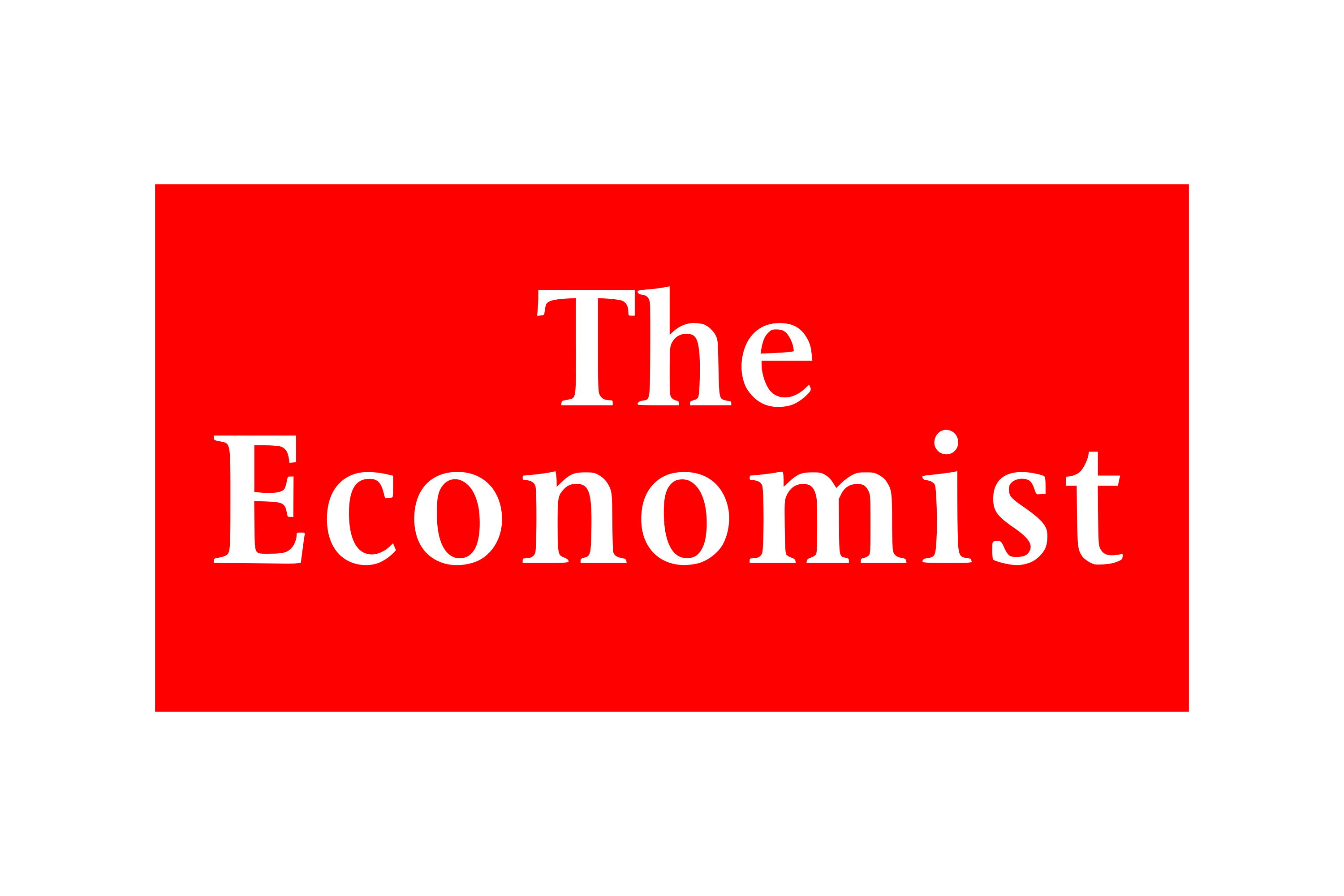Daily Briefing |
TODAY'S CLIMATE AND ENERGY HEADLINES
Expert analysis direct to your inbox.
Every weekday morning, in time for your morning coffee, Carbon Brief sends out a free email known as the “Daily Briefing” to thousands of subscribers around the world. The email is a digest of the past 24 hours of media coverage related to climate change and energy, as well as our pick of the key studies published in peer-reviewed journals.
Sign up here.
Today's climate and energy headlines:
- US: Trump’s first orders likely to include border, drilling, DEI policies
- US: High-risk fire weather returns to southern California starting Monday
- Europe’s banks rethink climate collaboration as alliances struggle ahead of Davos
- China’s thermal power rises in 2024, defying expectations of coal peaking
- German opposition leader vows to build 50 gas-fired power plants if elected
- The challenge now is deciding how to rebuild safely in areas destroyed by fire
- Climate misinformation is rife on social media – and poised to get worse
- Regional hotspots of change in northern high latitudes informed by observations from space
Climate and energy news.
US president-elect Donald Trump says he will sign “dozens of executive orders” within hours of taking office today, in an attempt to render many actions taken by the Biden administration over the past four years “null and void”, reports the Washington Post. Speaking last night at a dinner for people who had donated to his inauguration, Trump said: “Within hours of taking office I will sign dozens of executive orders, close to a hundred to be exact, many of which I will be describing in my address tomorrow…With a stroke of my pen, I will revoke dozens of destructive and radical executive orders and actions of the Biden administration,” the newspaper reports. Stephen Miller, Trump’s incoming White House deputy chief of staff for policy, has briefed Republican leaders on the expected orders, the newspaper continues, which will include “sweeping changes related to the southern border, energy and the federal government workforce”. The newspaper speculates that “Trump will prioritise rolling back regulations that prevent some oil drilling”, including restrictions in the Arctic National Wildlife Refuge. He will also “pause offshore wind leases” and “terminate Biden-era rules promoting electric vehicles and abolish other efforts focused on combating climate change”, it adds.
Bloomberg says that Trump is “poised to invoke emergency powers as part of his plan to unleash domestic energy production”. While many of the executive actions “will simply kick off a lengthy regulatory process”, the newswire says, “they’re set to touch the full spectrum of the US energy industry, from oil fields to car dealerships”. They also “underscore Trump’s determination to reorient federal government policy behind oil and gas production”. However, “it wasn’t immediately clear how an emergency energy declaration would be used”, the article notes, adding that a president could subsequently “unlock special powers over the transportation of crude and use authorities to direct shifts in how electricity is generated and transmitted”. Politico reminds readers that Trump has previously “promised to exit the Paris climate agreement”, adding: “This one is fairly doable – accomplishable with a Day 1 executive order – and its consequences far-reaching.” Bloomberg lists the projects that “are set to advance” if Trump lifts the Biden administration’s moratorium on new permits to export liquified natural gas (LNG). The Hill, Wall Street Journal and Punchbowl News all report on Trump’s expected executive actions, while Bloomberg says that Trump’s threat of import tariffs against a number of nations that have trade surpluses with the US is prompting “policymakers from South Korea, Taiwan, Vietnam and also the European Union to consider procuring more energy from the world’s biggest producer of crude and exporter of liquefied natural gas”. However, the Financial Times explains, while the EU has signalled its “openness to the idea”, it has no power to buy and “European countries are importing record volumes of cheaper LNG from Russia”. The Times reports on how ESG – bringing environmental, social and governance-based concerns to the fore in business – will be part of the “alphabet soup” that will be “off the menu” under Trump.
Meanwhile, in his final days in office, Biden has protected about 84%, or $96.7bn in clean-energy grants created by the Inflation Reduction Act “from any clawback by the next administration”, reports Reuters. These grants have been “obligated”, the newswires says, meaning the contracts have been signed between US agencies and recipients. Bloomberg also reports on the clean-energy funding approved in recent days. Finally, the Associated Press reports that tens of millions of Americans in the contiguous US face “dangerously low temperatures” this week. Reuters says the “blast of Arctic air” is caused by a temporary weakening of the polar vortex. Trump’s inauguration has been moved indoors as a result, says BBC News.
Southern California is facing another round of dangerous fire weather today and tomorrow, reports the Washington Post, “driving new risk as the region reels from the destructive firestorm that ignited during a high-wind event earlier this month”. The newspaper continues: “The latest Santa Ana winds – set to return Monday, with the strongest gusts expected Monday night into Tuesday morning – arrive amid a record dry stretch and what experts have described as unprecedented conditions ripe for fire.” The latest warnings suggest any new or existing fires “will have a high risk for very rapid fire spread”, the outlet says, noting that the two largest fires around Los Angeles – Palisades and Eaton – are still burning. The Guardian adds: “The Palisades fire was 52% contained as of 7am on Sunday morning, with 23,713 acres burned, 4,996 structures destroyed and 707 damaged, with these totals still expected to climb…Ten people have lost their lives, according to officials, in the Palisades fire. The Eaton fire was 81% contained, with 14,117 acres burned, 9,366 structures destroyed and 1,062 damaged. Seventeen people have died from the Eaton fire, according to officials.” The Los Angeles Times also has the story. The Guardian looks at why the LA fires “explode[d] out of control”. The Independent says that “whipping winds are intensifying natural disasters fuelled by climate change, stoking raging California wildfires and supercharging major Atlantic hurricanes”. And the Daily Telegraph reports on how extreme wildfires have become “the rule – not the exception”. For more on how the fires developed, see Carbon Brief’s in-depth article, which has been updated throughout the past week.
Meanwhile, Donald Trump has said he will “probably” travel to southern California this week, reports Politico. In a phone interview on Saturday with NBC News, Trump said: “I was going to go, actually yesterday…but I thought it would be better if I went as president.” Trump also confirmed that he had not spoken to California governor Gavin Newsom, reports the Los Angeles Times. The Guardian looks at “what Trump’s response to LA fires portends for future climate disasters”. In other political developments, the Washington Post explores how Newsom is facing “complex politics” and “Republican criticism” over his handling of the fires. It notes that Newsom “has alternated between sparring openly with Republicans and dismissing their criticisms as false or unimportant distractions”. The Guardian reports on the “flood of disinformation” around the fires, while Reuters factchecks a clip of “fire tornadoes” in Wyoming that have been shared on social media as occurring in Los Angeles. Politico speaks to Newsom’s deputy director of communications “for an inside look at how the governor’s office mobilised its misinformation response team”.
In other coverage of the fires, Bloomberg reports that “investors are growing increasingly concerned that a $21bn state fund crafted to backstop utilities will fall far short of what’s needed if companies are found liable”. The Washington Post says that a “growing number of homeowners nationwide are being dropped by insurance companies as firms and regulators struggle to deal with the unpredictable and costly risks of climate disasters”. Reuters reports that LA homeowners “face price gouging after wildfires”. The Hill says that Newsom has announced commitments from five major banks to offer homeowners affected by the wildfires a 90-day grace period on their mortgage payments. The New York Times reports that the Los Angeles fire chief faces calls for resignation. The Associated Press says that families of wildfire victims are “questioning what more could have been done”. A Washington Post “probe” reveals that a memo warning LA “had no specialised wildland unit to respond to daily brush fires and scrape vegetation, dig ditches and do the other labour to ensure blazes did not spread or rekindle” has gone “unaddressed” for two years. The Los Angeles Times reports that NASA’s Jet Propulsion Laboratory has “escaped the worst” of the Eaton fire unscathed, but more than 200 employees have lost their homes. There is also coverage – in E&E News, Los Angeles Times and the Associated Press – of an unrelated fire at the world’s largest battery storage site in northern California.
Finally, the media continues its coverage of the impacts on the rich and famous. CNN reports that Stephen King has called for the Oscars to be cancelled, with the author saying he will not vote in the awards. And the Daily Mail reports that major music labels have cancelled their “glamorous” Grammy afterparties. The Grammys and Oscars are scheduled to proceed as planned on 2 February and 2 March, respectively, CNN notes.
European banks have “threatened to pull out of the sector’s largest climate alliance unless it softens its rules”, reports the Financial Times, “as executives on both sides of the Atlantic fret about the future of net-zero collaboration ahead of Donald Trump’s inauguration”. Citing “three people familiar with their thinking”, the FT says that “top lenders in Europe are reconsidering their membership of the Net-Zero Banking Alliance (NZBA)…after bulge-bracket US peers including JPMorgan, Citigroup and Goldman Sachs quit the group”. Four of Canada’s biggest lenders said on Friday that they were also withdrawing, the article says, adding: “Separately, the senior ranks of the umbrella group called the Glasgow Financial Alliance for Net-Zero (Gfanz), of which the banking group was one part until earlier this month, have been struggling to convene a meeting to discuss the future of climate collaboration, ahead of the World Economic Forum in Davos this week.”
In related news, the Washington Post reports that the Federal Reserve announced on Friday that “it is leaving an international grouping of central banks that focused on how regulation of the financial system could help combat climate change”. In a short statement, the Fed said it had “appreciated” working with the Network of Central Banks and Supervisors for Greening the Financial System, the article notes, but added that the organisation “has increasingly broadened in scope, covering a wider range of issues that are outside of the board’s statutory mandate”.
Meanwhile, the New York Times says that economic and political leaders headed to Davos are “bracing for a week’s worth of discussions about how to adapt to a warming world while confronting two new realities: the world is the hottest it’s ever been, and Donald J Trump will once again be president of the US.” And a group of authors – including Børge Brende, president and CEO of the World Economic Forum – writes in Politico that Europe should opt for “strategic interdependence”; that is, “embracing interconnectedness where prudent while building autonomy where it can”, on issues including energy supply.
China’s thermal power generation reached 6,340 terawatt-hours (TWh) in 2024, up 1.5% year-on-year, Reuters reports, adding that the data defies “expectations that coal generation was peaking” and highlights the “challenges in phasing out coal-fired power”. BJX News also covers the new data, reporting that China’s total electricity generation reached 9,418TWh in 2024, up 4.6% year-on-year. It adds that, in December last year, wind power and solar power generation increased year-on-year by 6.6% and 28.5%, respectively. Meanwhile, China’s oil refinery throughput in 2024 fell for the first time in more than two decades barring the pandemic-hit year of 2022, Reuters reports.
Elsewhere, the Paper reports that China’s Ministry of Ecology and Environment (MEE) has held its conference “determining ministry priorities” in 2025, with key tasks including deepening “ecological civilisation reform” and promoting “green, low-carbon, high-quality” development, including expanding the carbon market. 21st Century Business Herald publishes a commentary by Lin Boqiang, dean of Xiamen University’s China Institute for Energy Policy Studies, arguing that “challenges remain” for China in adapting its carbon market to address the carbon border adjustment mechanism (CBAM), such as cost pressures, quota allocation mechanisms and accuracy of emissions data.
The Financial Times reports that China’s economy grew 5% in 2024, with growth in the fourth quarter of 2024 reaching 5.4%. The South China Morning Post (SCMP) also covers the announcement, reporting that China’s EV production increased by 39% last year. Bloomberg reports that Chinese officials have “encouraged regulatory agencies and local governments to curb technology transfers and equipment exports”, including those of low-carbon technologies, to India and Southeast Asia to prevent companies from “shifting production” outside of China. Another FT article reports that “Europe’s carmakers risk hefty bill for carbon credits from Chinese rivals”, while a third reports that the boss of Mercedes has said that the EU “should encourage Chinese carmakers to open more plants in the bloc as part of a deal to drop punitive tariffs on imported Chinese EVs”. And the Washington Post reports on “why Chinese EVs are displacing Teslas”.
Separately, BJX News reports that details about the first batch of renewable energy projects eligible for subsidies has been published, covering 100 projects totalling 2.2 gigawatts (GW) of capacity. China Energy Net says that China’s finance ministry has clarified an earlier announcement that government agencies must ensure that 30% of their vehicle purchases are EVs to add that “in principle, 100% of procurement [should be EVs]”. (See Carbon Brief’s 3rd January Daily Briefing). State news agency Xinhua reports that China’s Ministry of Industry and Information Technology (MIIT) has launched the “2025 future industries innovation programme”, which will focus on developing sectors including “clean hydrogen”. China Economic Net quotes Peng Suping, a professor at China University of Mining and Technology, saying that China’s hydrogen industry has reached a “critical juncture”.
Finally, Reuters reports that China’s crude oil imports from its top supplier Russia “were up 1% in 2024 to a record high versus 2023”. The Times reports that two of China’s biggest green industrial companies “have been earmarked to get £60m in Scottish government funding to help build factories in Scotland serving vast offshore wind farms in the North Sea”. And Bloomberg reports that the share prices of three major Chinese solar companies slipped today “after they announced gloomy preliminary results for 2024”.
German opposition leader Friedrich Merz, a potential candidate for Germany’s next chancellor, has pledged to construct 50 gas-fired power plants “as quickly as possible” if his CDU/CSU party wins elections on 23 February, reports Reuters, citing his interview with t-online. The newswire notes that Germany’s gas-fired electricity production “jumped by a record 79%” in November compared to the previous month, compensating for a second consecutive month of “sharply below-normal” output from wind farms. Despite this, Deutsche Welle notes that 2024 marked a record year for German wind energy, with more than 2,400 new onshore turbines approved, totalling around 14 gigawatts (GW) of capacity.
Meanwhile, the far-right Alternative for Germany (AfD) has made opposition to Germany’s energy policies – and wind, in particular – a key part of its election campaign, notes DW. At the AfD’s recent congress, chancellor candidate Alice Weidel denounced renewable energy as “fluctuating” and vowed to dismantle the country’s “windmills of shame”, advocating increased use of fossil fuels and nuclear power.
However, EurActiv reports that CDU/CSU’s Merz has “pulled back” from a previous goal of restoring Germany’s nuclear reactors: “They are being dismantled, they are being decontaminated. There is no way to fix this, most likely.”
Separately, Frankfurter Allgemeine Zeitung reports that energy experts suggest Germany may need much less electricity than assumed, potentially reducing the need for offshore wind farms, solar installations and extensive grid expansion.
Finally, Süddeutsche Zeitung reports that chancellor candidate Friedrich Merz has not ruled out a coalition with the German Green party. The outlet notes that he described the Green party’s chancellor candidate, Robert Habeck, as a “pleasant conversation partner”, but criticised his record as economy minister as “disastrous”. And Bloomberg reports on how Habeck and the Green party have been “appealing to neglected moderates” at an election rally “deep in car country”.
Climate and energy comment.
The “string of devastating fires in the last few decades” in California means “we should all understand by now that we have to make adjustments to the way we live and build”, says an editorial in the Los Angeles Times. It continues: “Every horrible, large-scale urban fire sparked by a wildfire in California has taught cities something about how to build and lay out communities better.” But these lessons do not “necessarily mean never rebuilding in an area that suffered from a wildfire”, the outlet says: “It means creating fire breaks and buffer zones to offer some barrier between developments and wild land. It means building with more fire-resilient materials and ember-resistant vents…Rebuilding in fire-prone areas may [also] mean moving power lines underground, widening roadways for easier access in and out of a neighborhood during a fire, or putting external sprinklers on roofs of houses. Few of these ideas are inexpensive – but neither is a destructive fire.”
Elsewhere, a Financial Times “big read” delves into the task of rebuilding the areas devastated by the fires. But, it warns, “the costs and the mounting risks of future disasters are hard to overcome”. In a guest essay, two scientists write in the New York Times that “there is no way to retreat from the risk of wildfires”. They continue: “We need a serious discussion of how to live with fire in this new era. Today’s wildfires make clear that ‘let it burn’ is not a realistic or humane response to the destruction of homes and communities – in either urban or rural places. These wildfires also make clear that the prospect of large-scale retreat from fire risk is a fantasy. Instead, we need greater investment in preparing our buildings, and community-led experiments in new ways to protect neighborhoods.” In the Guardian, reporter and author Dani Anguiano writes on the “lessons” of previous fires, noting: “Those familiar with fire know what is needed to prepare and respond to these emergencies. We need more good fire on the land and less dense forests. Communities must get ready for all-out firestorms with massive evacuation plans.” On his Substack, veteran environmentalist and author Bill McKibben reflects on the fires and the state of the climate as Trump begins his second term of office. He writes: “It is hard, watching the richest men on Earth grovel before the new king, not to feel a little fear.” Finally, Isaac Schorr – staff writer at US website Mediate – writes in the climate-sceptic Daily Telegraph that the wildfires “have doomed Kamala Harris’s political comeback” because “the costs of the progressive ideology embraced by the leaders of her home state have been tragically exposed”.
Writing in the Conversation, Dr Jill Hopke – associate professor of journalism at DePaul University in Chicago – explores how the decision by Meta, the parent company of Facebook and Instagram, to end its fact-checking programme “could open the floodgates to more climate misinformation”. Meta CEO Mark Zuckerberg specifically cited Twitter’s “community notes” as an inspiration for his company’s planned changes in content moderation, writes Hopke, but “research has found that the response time of crowd-sourced community notes is too slow to stop the diffusion of viral misinformation early in its online life cycle – the point when posts are most widely viewed”. She continues: “In the case of climate change, misinformation is ‘sticky’. It is especially hard to dislodge falsehoods from people’s minds once they encounter them repeatedly. Furthermore, climate misinformation undermines public acceptance of established science. Just sharing more facts does not work to combat the spread of false claims about climate change.” This is why warning people against climate misinformation before it goes viral “is crucial for curbing its spread”, says Hopke, but “doing so is likely to get harder on Meta’s apps”.
New climate research.
A new study on warming in the Arctic-boreal zone finds that northern Alaska and Siberia are seeing “the most severe and widespread changes”. Using data on “ecosystem thermal, moisture, and vegetation properties”, the authors identified multiple changes in climatic and vegetation conditions. They say that both vegetation greening and browning have been widespread across the Arctic-boral zone. However, they add that environmental changes are “spatially complex” and local assessments are also needed.
Other Stories.
 From butterflies to climate, Camille Parmesan, scientific refugee in France, far from Trump’s America
Le Monde
From butterflies to climate, Camille Parmesan, scientific refugee in France, far from Trump’s America
Le Monde
 ‘Net-zero hero’ myth unfairly shifts burden of solving climate crisis on to individuals, study finds
Australian Associated Press
‘Net-zero hero’ myth unfairly shifts burden of solving climate crisis on to individuals, study finds
Australian Associated Press
 Solar farms are booming in the US and putting thousands of hungry sheep to work
The Associated Press
Solar farms are booming in the US and putting thousands of hungry sheep to work
The Associated Press














